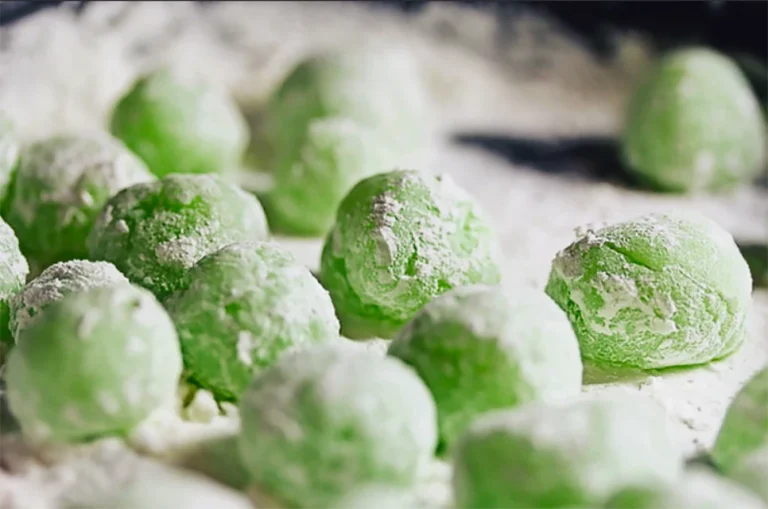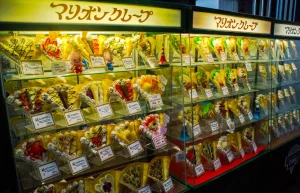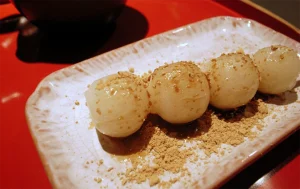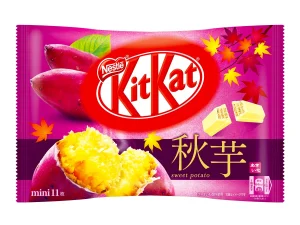Table of Contents
ToggleThe Ultimate Guide to Mochi: Exploring Japanese Rice Cakes and Their Rich Tradition
Introduction to Mochi: The Beloved Japanese Rice Cake
Mochi, the iconic Japanese rice cake, is a chewy, delectable treat made from glutinous rice, known as mochigome. With its unique texture and a variety of flavors, mochi has become a popular delicacy enjoyed both in Japan and around the world. From its traditional roots in Japanese culture to modern adaptations, mochi offers an array of delicious experiences. This article will delve into the diverse world of mochi, exploring traditional varieties, innovative flavors, and the cultural significance behind this much-loved Japanese snack.
What is Mochi?
Mochi is created by steaming glutinous rice until it becomes sticky, then pounding it into a smooth, elastic dough. This dough can be shaped into various forms and enjoyed plain or with a wide range of fillings. Mochi’s soft and chewy texture makes it a unique addition to any Japanese meal or a delicious snack on its own.
A Brief History of Mochi
Mochi has been a beloved part of Japanese culture for centuries, with its origins dating back to the Heian period (794-1185). Originally, it was used in religious ceremonies and as an offering to deities, symbolizing good fortune and prosperity. During these times, mochi was considered a sacred food, reserved for special occasions and celebrations.
Over the centuries, mochi transitioned from being a spiritual offering to a popular everyday treat, especially enjoyed during festivals and holidays. Its chewy, sticky texture and subtle flavor made it a versatile ingredient, leading to the development of many regional and seasonal varieties. From New Year celebrations with Kiri Mochi in ozoni soup to Sakura Mochi during cherry blossom season, mochi has cemented itself as a symbol of celebration and joy in Japanese culture.
Today, mochi is not just a traditional dessert; it has also become a worldwide favorite, blending ancient customs with modern flavors. Whether enjoyed in classic forms or as innovative creations like ice cream mochi, this iconic rice cake continues to captivate taste buds globally.
To experience the authentic taste of traditional and modern mochi varieties, treat yourself to a Joybox—a subscription box filled with delicious Japanese snacks delivered right to your door!
Traditional Varieties of Mochi
1. Plain Mochi (Kiri Mochi)

- Description: Kiri Mochi is the simplest form of mochi, typically cut into small rectangular blocks. It can be grilled, boiled, or baked and is often served with soy sauce, sugar, or sweet toppings like red bean paste.
- Cultural Significance: Often eaten during New Year’s celebrations as part of ozoni soup, Kiri Mochi symbolizes a fresh start and new beginnings.
2. Daifuku Mochi

- Description: A popular mochi variety filled with sweet red bean paste (anko). The soft, chewy exterior contrasts with the smooth, sweet filling, making it a favorite treat across Japan.
- Cultural Significance: Daifuku is enjoyed year-round, especially during Japanese tea ceremonies, symbolizing purity and elegance.
3. Sakura Mochi
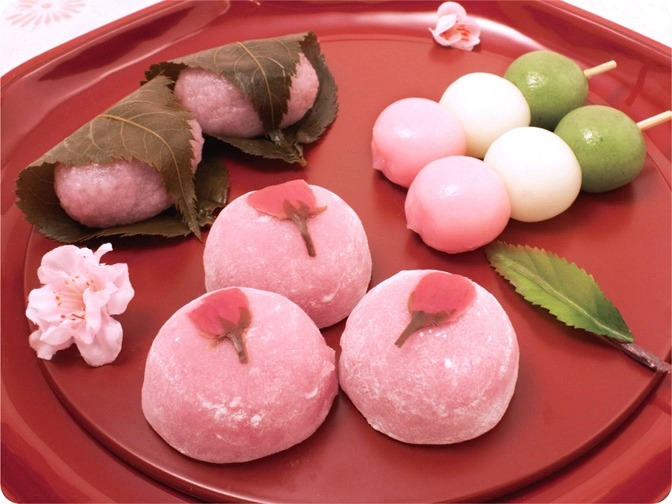
- Description: A seasonal rice flour delicacy enjoyed during cherry blossom season, made with sweet red bean paste wrapped in pink-colored rice flour and a pickled cherry blossom leaf.
- Cultural Significance: Sakura Mochi symbolizes the arrival of spring and is commonly enjoyed at hanami (cherry blossom viewing) parties.
4. Kashiwa Mochi
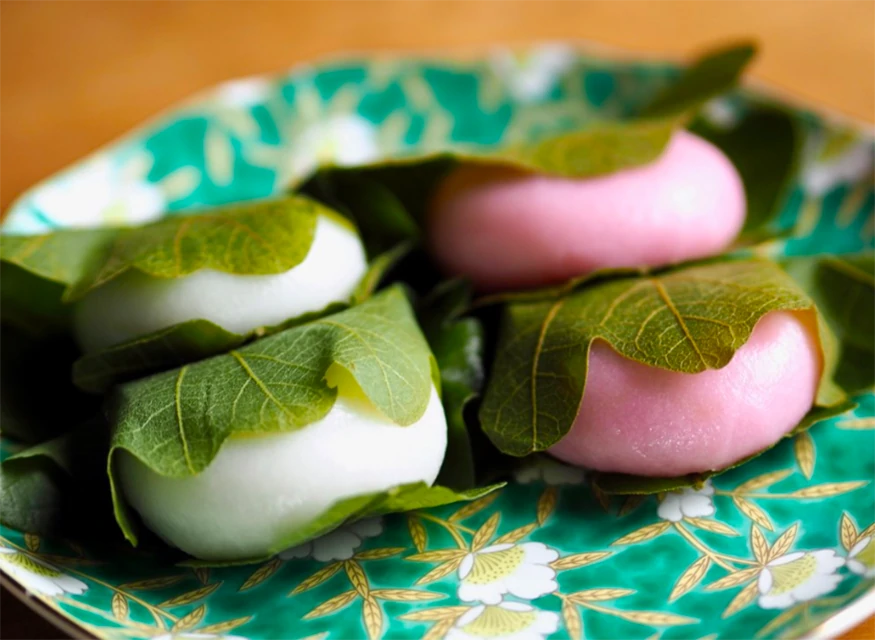
- Description: Traditionally eaten on Children’s Day, this variety consists of rice flour filled with sweet red bean paste and wrapped in an oak leaf.
- Cultural Significance: The oak leaf represents strength and growth, making Kashiwa Mochi an ideal treat for celebrating children’s health and happiness.
5. Warabi Mochi
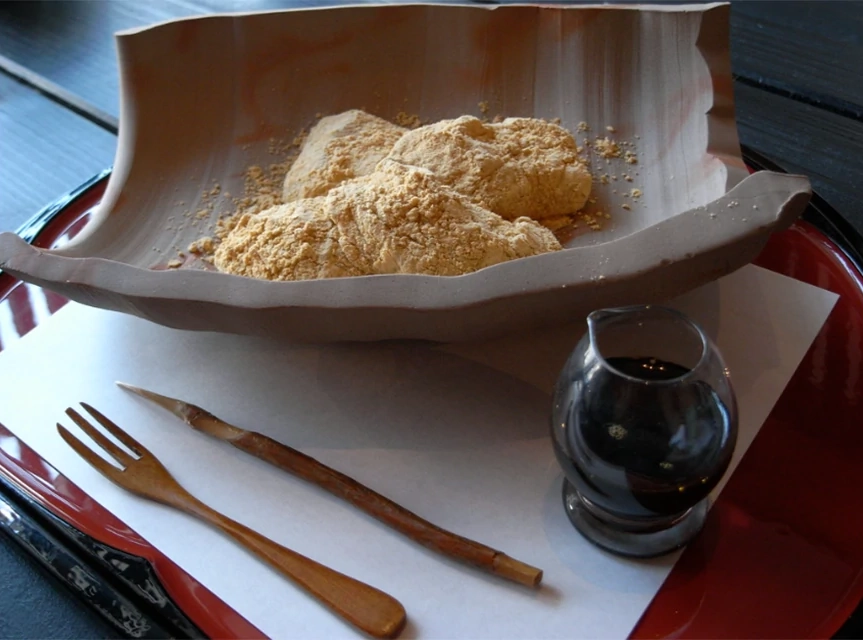
- Description: Made from bracken starch, Warabi Mochi has a jelly-like texture and is typically dusted with kinako (roasted soybean flour) and drizzled with kuromitsu (black sugar syrup).
- Cultural Significance: Popular as a summer treat, Warabi rice flour is enjoyed for its cool and refreshing texture, perfect for hot days.
Modern Interpretations and Flavors of Mochi
1. Ice Cream Mochi
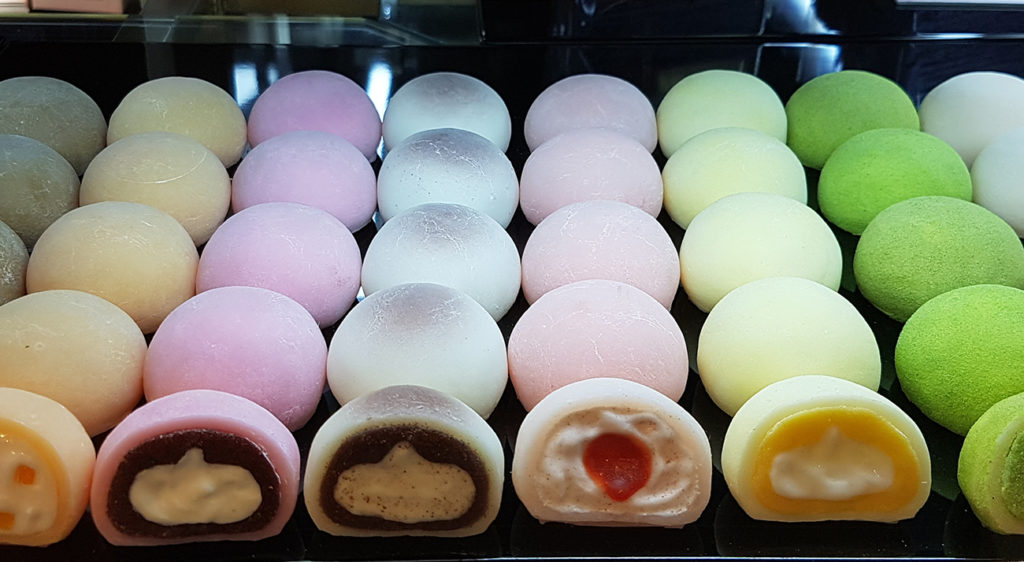
- Description: A delightful fusion of traditional rice flour and creamy ice cream. Available in flavors like matcha, strawberry, mango, and more, ice cream mochi has become a global favorite.
- Popularity: Widely loved worldwide, especially in the United States, ice cream mochi is now commonly found in supermarkets and dessert shops.
2. Fruit-Filled Mochi
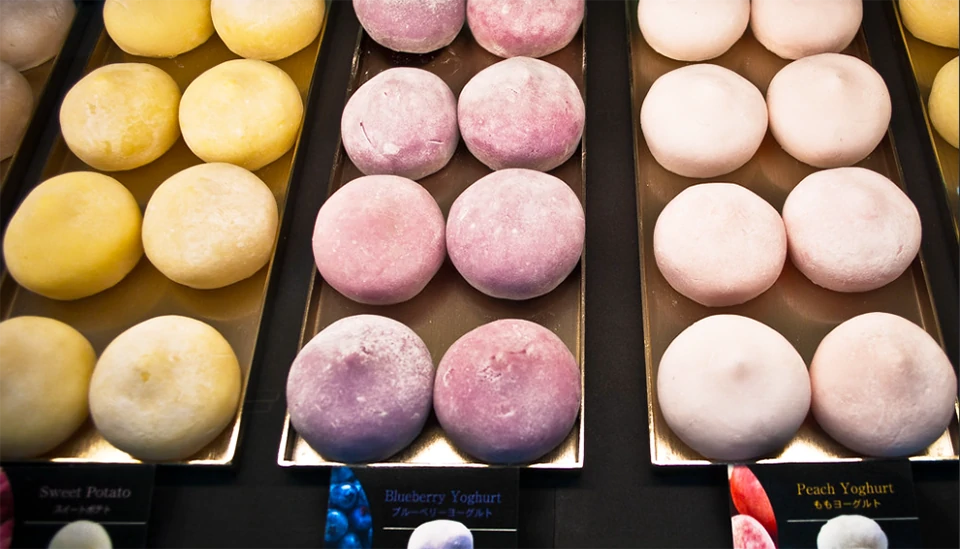
- Description: Fresh fruit varieties such as strawberries, mangoes, and grapes are encased in sweet red bean paste and soft rice flour.
- Popularity: Valued for its refreshing taste and vibrant presentation, fruit-filled mochi offers a natural, healthy twist on the classic treat.
3. Savory Mochi
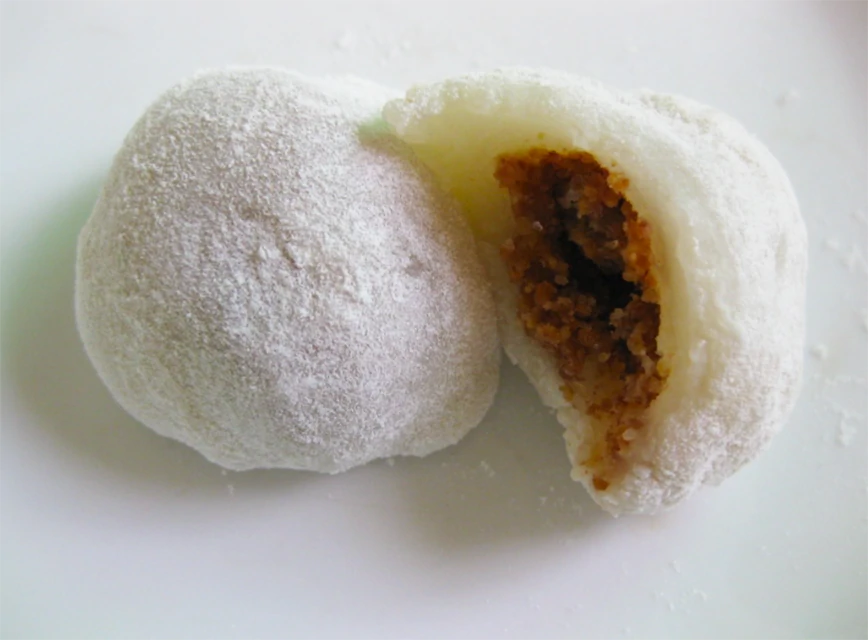
- Description: Less common but increasingly popular, savory varieties include fillings like pickled vegetables, cheese, or even meat.
- Popularity: Gaining a following among those who prefer a savory snack, savory mochi showcases the versatility of this Japanese delicacy.
Making Mochi at Home: A Simple Guide
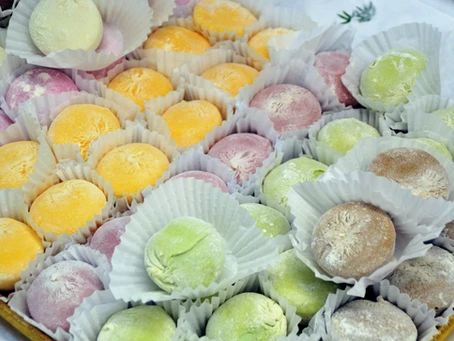
Ingredients Needed:
- 1 cup of mochigome (glutinous rice)
- Water for soaking and steaming
- Potato starch or cornstarch for dusting
- Optional fillings: sweet red bean paste, ice cream, fresh fruit, etc.
Instructions:
- Soak the Rice: Soak the glutinous rice in water for at least 4 hours or overnight.
- Steam the Rice: Drain the rice and steam it for about 40 minutes until fully cooked and sticky.
- Pound the Rice: Transfer the steamed rice to a sturdy bowl and pound it with a wooden mallet or pestle until it becomes smooth and elastic.
- Shape the Mochi: Dust your hands and a clean surface with potato starch. Take small portions of the dough, flatten them, and wrap them around your desired filling.
- Enjoy: Serve immediately or store in an airtight container for later.
Health Benefits of Mochi
Mochi is naturally gluten-free and made from whole grains, making it a healthier alternative to many other snacks. However, it is also high in carbohydrates and should be enjoyed in moderation. Certain varieties, such as fruit-filled or savory mochi, offer additional nutrients from fresh ingredients.
Mochi in Japanese Culture and Festivals
Mochi holds a special place in Japanese culture, often associated with various celebrations and traditions:
- New Year’s Mochi (Kagami Mochi): A decorative mochi displayed during the New Year, symbolizing prosperity and good fortune for the coming year.
- Mochitsuki (Mochi-Pounding Ceremony): A traditional Japanese ceremony where families and communities come together to pound steamed rice into mochi, symbolizing unity and teamwork.
- Hina Matsuri (Doll’s Day): Celebrated on March 3rd, this day features colorful hina-arare (mochi balls) as part of the festivities to wish for the health and happiness of young girls.
Craving more mochi goodness?
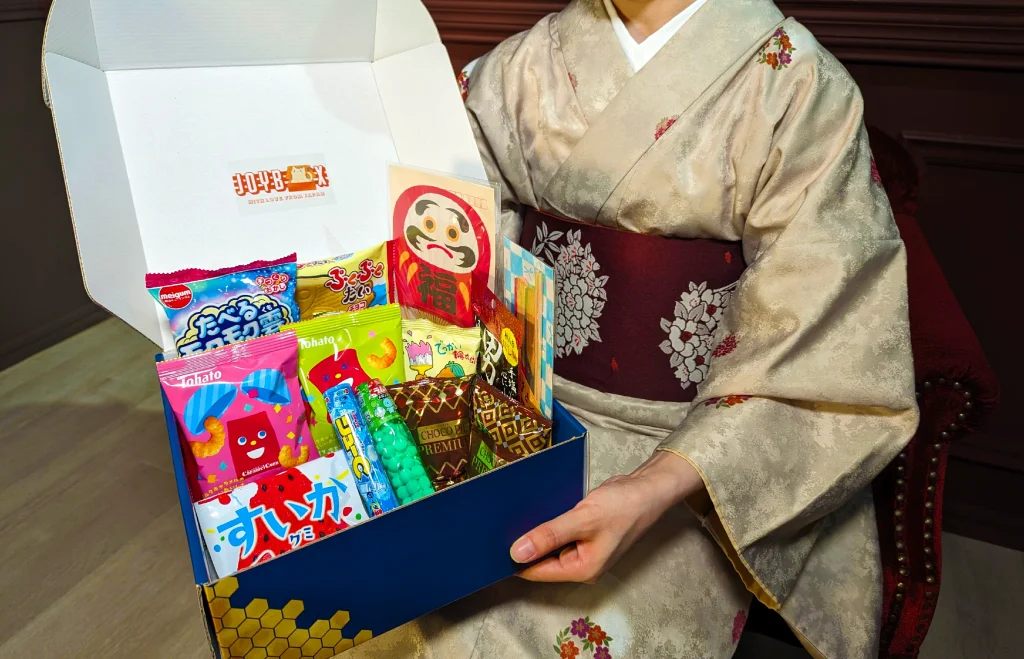
Mochi is more than just a delightful snack; it’s a symbol of Japanese culture, tradition, and culinary creativity. Whether you enjoy the classic varieties or explore modern interpretations like ice cream or fruit-filled mochi, there’s no denying the joy that these rice cakes bring. Mochi continues to be a cherished part of Japanese cuisine, inviting people around the world to savor its unique flavors and textures. So, take a bite into this chewy, versatile treat and experience a taste of Japan’s rich heritage.
Exploring the world of mochi allows one to appreciate the artistry and tradition behind this simple yet delightful rice cake. And if you’re feeling inspired, why not start your mochi adventure today by sampling different varieties with your very own Japanese Snack Box?

